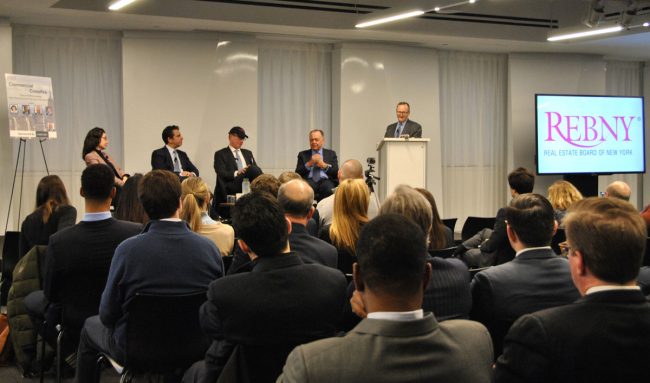From their corner offices at addresses like 330 Madison Avenue and 200 Park Avenue, the city’s top office brokers work on the blockbuster deals that keep the Big Apple’s commercial towers humming.
But they didn’t start out that way.
“In the early ’80s, it really was ‘Glengarry Glen Ross’ at Williams Real Estate,” Peter Riguardi, president of the tri-state region for JLL, reflected on his days at the brokerage, which – much like the famed Edward S. Gordon Company – launched the careers of many of today’s industry leaders.
“I mean, I used to lock my desk and put a piece of Scotch tape on the bottom just to make sure I knew no one stole my canvass cards,” he added. “That was really how we were.”
As a young broker at Williams (which was folded into Colliers International in 2008), Riguardi said he looked to the generation of dealmakers before him, and tried to model the best qualities of his mentors.
David Levinson, who left the world of brokerage to co-found L&L Holding Company in 2000, was patient and focused — traits that stood out in what seemed like a hectic, go-get-‘em workplace. Bob Alexander, now chair of the tri-state region at CBRE, had uncanny people skills and could woo any client.
“And while all that craziness was going on, David was just focused,” Riguardi explained. “You just sort of see all these things and say, well, I can’t be like David 100 percent. I can’t be like Bob 100 percent. But I can pick off things that work for me.”
Riguardi spent about an hour Monday evening with fellow industry power brokers Steve Siegel, Mitch Steir and Mary Ann Tighe looking back on their careers and doling out advice on what worked for them, and what didn’t.

Mary Ann Tighe, Peter Riguardi, Mitchell Steir, Steve Siegel and Bill Montana
Many of the attendees at the panel hosted in Midtown by the Real Estate Board of New York were young brokers eager to hear their secrets to success. One thing the industry titans all agreed on is that there’s no such thing as a super-broker that can handle every aspect of a deal.
“You’ve seen great canvassers over the years who don’t understand that if they were the great canvasser and happy with that as their role, aligning themselves with the right team, they could make a fortune,” explained Savills Studley CEO Steir, who proudly donned a baseball cap emblazoned with his company’s logo.
“There’s very few people who [have] A-plus skill sets from beginning to end,” he added. “Maybe years ago we would do more things on our own, but as time moves on, we all work in teams and groups, and you’ve got to know who you are because that’s the only way to know who to surround yourself with.”
Tighe chimed in: “You’re not working on complex-enough deals if in fact you can do the deal from start to finish.”
For the CEO of the tri-state region in New York for CBRE, Tighe’s path to CRE was unconventional: She didn’t get into the business until the age of 36, somewhat accidentally, following careers in the arts and television.
And she said she didn’t immediately take to real estate.
“I spent a couple years thinking, what a disastrous choice this was,” she said.
Through the first 18 months of her career, Tighe toiled away on a 1,700-square-foot lease deal in Long Island City, “drowning” in her job, she said. It was then that she found a mentor in a broker named Carol Nelson, who told her she was wasting her time and eventually took Tighe under her wing.
Tighe said one of the things that made an impression on her at the time was a framed letter Nelson kept on her desk from IBM rejecting a pitch she had made for a project on Park Avenue. Next to the photo was a framed notice of a deal Nelson completed months later at the project, the Park Avenue Tower.
“She didn’t teach me much about real estate,” Tighe explained. “She taught me that sort of mindset about the business. The biggest thing she taught me was that ‘no’ was only no at that moment in time – that ‘no’ was actually the beginning of a conversation.”
Savills Studley’s Bill Montana, the panel’s moderator, asked the brokers what was on their “don’t do” lists, the things they’ve realized over the years to be productivity killers.
Riguardi said he prefers to go on as few building tours as necessary. Tighe said she no longer does work in China, finding the time difference too difficult to navigate.
Siegel, CBRE’s chair of global brokerage, said that over the years he’s reduced the number of breakfast meetings he takes, explaining his time is better spent getting ahead of all the day’s demands early.
And he said brokers shouldn’t be afraid to be the experts in the room when helping their clients make significant decisions.
“You have to not be afraid to guide your client,” he said. “Don’t be led. Be a leader.”
